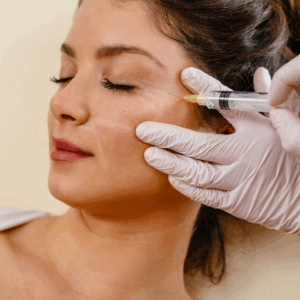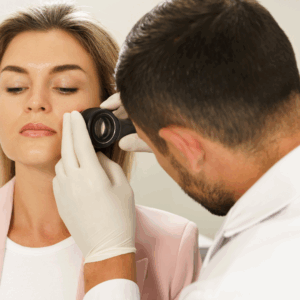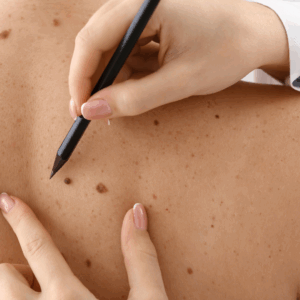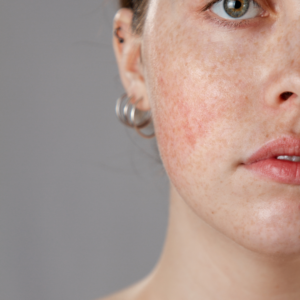
Sweat, Sunscreen, and Acne: How to Stay Clear Through Spring Activities
Think skin exams are only for those with visible concerns? Annual skin checks can detect early signs of cancer.
Over your lifetime, your skin may develop new skin growths. While most of these are not a cause for concern, it is important to visit your dermatologist to monitor these growths.
Keep reading to learn more about this condition and when it is appropriate to see a dermatologist.

There are two main types of skin growths: malignant and benign. Benign growths are not dangerous and usually do not turn into skin cancer. Malignant growths, otherwise known as skin cancers, may appear as new lesions or as changes in growths that have been present for years. Malignant and benign skin growths may differ in appearance but are usually hard to distinguish for the untrained eye. Benign skin growths usually have well-defined borders, even color throughout, and a symmetrical appearance. Malignant skin growths tend to have jagged or uneven borders, uneven color, or an asymmetrical appearance. They may also appear as spots that do not match any other spots on the skin, spots that do not heal, or spots that bleed more easily than the rest of the skin.
Dermatologists undergo many years of training that allow them to tell the difference between benign and malignant growths. Your dermatologist will start by conducting a physical examination of your skin to determine whether the growth is benign or not. If the growth is concerning, they will perform a biopsy of the spot, which will then be sent to the dermatopathologist to be analyzed under a microscope. This allows the doctor to provide an accurate diagnosis based on cellular structure rather than visual assessment.
Yes, skin growths can be non-cancerous. Common benign growths include moles (nevi), which are usually small, dark, and uniform in appearance; freckles, which are small, flat spots caused by sun exposure; and skin tags, which are soft, small, flesh-colored growths that often appear in areas where the skin folds. Other non-cancerous growths include seborrheic keratoses, which are wart-like and can appear anywhere on the body, and lipomas, soft, fatty lumps that grow under the skin.
While these benign growths are typically harmless, it is important to monitor them for any changes. Sudden changes in size, shape, color, or texture, as well as symptoms like itching, bleeding, or pain, should be evaluated by a dermatologist. Regular skin checks can help distinguish between benign and potentially malignant growths, ensuring timely intervention.
Malignant skin growths, or skin cancers, primarily include basal cell carcinoma (BCC), squamous cell carcinoma (SCC), and melanoma. Basal cell carcinoma is the most common, usually appearing as a pearly bump on sun-exposed areas like the face and neck. It grows slowly and rarely spreads but can cause local damage. Squamous cell carcinoma, arising from the upper skin layers, presents as a red, firm nodule or a scaly lesion and has a higher potential to spread compared to BCC, making early treatment essential.
Melanoma is less common but more dangerous due to its ability to spread quickly. It originates in melanocytes, the pigment-producing cells, and often looks like an irregular mole. Key signs include asymmetry, irregular borders, multiple colors, and a diameter over 6 millimeters. Regular skin checks and early detection are crucial for effective treatment. While BCC and SCC are linked to cumulative sun exposure, melanoma can also result from genetic factors and intense, intermittent sun exposure.
You should see a dermatologist if you notice any new skin growths or changes in existing moles or spots, such as asymmetry, irregular borders, multiple colors, or a diameter larger than 6 millimeters. Additionally, it’s important to seek medical advice if a growth is itching, bleeding, or not healing. Early detection and evaluation by a dermatologist are crucial for effective treatment and management of potential skin cancers. Regular skin checks, especially for those with a history of sunburns or a family history of skin cancer, can help catch issues early.
If you have a question about a spot or growth on your body, please Request an Appointment. During your consultation, our skilled dermatologists will evaluate your concerns and determine an ideal treatment plan for your specific case. Our Bryn Mawr office is beautifully equipped, so you’ll feel at home as soon as you walk in the door.
Get started today by calling our dermatology team at (610) 525-7800 or easily book an appointment online. We look forward to caring for you!

Think skin exams are only for those with visible concerns? Annual skin checks can detect early signs of cancer.

Think skin exams are only for those with visible concerns? Annual skin checks can detect early signs of cancer.

Think skin exams are only for those with visible concerns? Annual skin checks can detect early signs of cancer.

Think skin exams are only for those with visible concerns? Annual skin checks can detect early signs of cancer.

Discover a youthful lift without surgery. Learn how our thread lift at Bryn Mawr Dermatology can rejuvenate your appearance.

Discover a youthful lift without surgery. Learn how our thread lift at Bryn Mawr Dermatology can rejuvenate your appearance.

By: Bryn Mawr Dermatology, Published: Dec 16, 2021
Medically Reviewed By: Christine Stanko, MD, FAAD – June 25, 2024
For COSMETIC APPOINTMENTS:
For MEDICAL APPOINTMENTS: